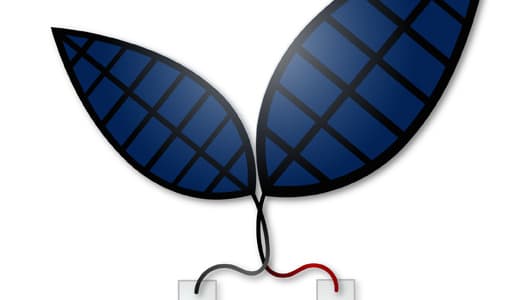Bionic Leaf 2.0 Uses Solar Power To Split Water Molecules And Bacteria To Produce Liquid Fuel
Fast depleting fossil fuels have led to a more vigorous search for alternative energy sources. In lieu of that, a team of researchers from Harvard Medical School and Wyss Institute for Biologically Inspired Engineering has come up with 'Bionic Leaf 2.0' - a system that banks on solar energy to split the water molecules and bacteria that eat hydrogen for the production of liquid fuels. If this research successful moves from labs to the real world, mankind's days of seeking fuel in the ground will be over and it will be the time to look upwards to the Sun Gods.

Working on this project are Prof. Daniel Nocera, Prof. Elliott T. and Prof. Adams, the trio who has been able to create a truly artificial photosynthesis system capable of creating any carbon based molecule. In other words, the system has a huge, versatile range of applications.
The new system has been built upon MIT's Artificial Leaf Uses Sunlight To Split Water Into Oxygen & Hydrogen by the team which faced several challenges. The older system though capable of creating isopropanol, a colorless, flammable chemical compound, it needed a catalyst (a nickel-molybdenum-zinc alloy) which resulted in the production of reactive oxygen species, elements that would destroy the DNA of bacteria. To tackle this issue, the team had to use extremely high voltages, which would reduce the overall system's efficiency.
With Bionic Leaf 2.0, the team came up with a new catalyst made up of cobalt and phosphorous alloy, which did not create any reactive oxygen species. This resulted in 10% efficiency in the conversion of solar energy into biomass, which is 10 times higher than the fastest growing plants. Moreover, in addition to isopropanol, the system can now also produce isobutanol and isopentanol.
These newly designed, biologically compatible catalysts come with a new advantage. In that, they are 'self healing' thanks to their chemical design. This means that the material wouldn't be leeched into solution.
The researchers are now at a point where they are already considering commercial application. They want to work with scientists in India and other countries to develop this technology further and bring forth many different applications.
Source: #-Link-Snipped-#

Working on this project are Prof. Daniel Nocera, Prof. Elliott T. and Prof. Adams, the trio who has been able to create a truly artificial photosynthesis system capable of creating any carbon based molecule. In other words, the system has a huge, versatile range of applications.
The new system has been built upon MIT's Artificial Leaf Uses Sunlight To Split Water Into Oxygen & Hydrogen by the team which faced several challenges. The older system though capable of creating isopropanol, a colorless, flammable chemical compound, it needed a catalyst (a nickel-molybdenum-zinc alloy) which resulted in the production of reactive oxygen species, elements that would destroy the DNA of bacteria. To tackle this issue, the team had to use extremely high voltages, which would reduce the overall system's efficiency.
With Bionic Leaf 2.0, the team came up with a new catalyst made up of cobalt and phosphorous alloy, which did not create any reactive oxygen species. This resulted in 10% efficiency in the conversion of solar energy into biomass, which is 10 times higher than the fastest growing plants. Moreover, in addition to isopropanol, the system can now also produce isobutanol and isopentanol.
These newly designed, biologically compatible catalysts come with a new advantage. In that, they are 'self healing' thanks to their chemical design. This means that the material wouldn't be leeched into solution.
The researchers are now at a point where they are already considering commercial application. They want to work with scientists in India and other countries to develop this technology further and bring forth many different applications.
Source: #-Link-Snipped-#
Replies
You are reading an archived discussion.
Related Posts
Keeping the surge of 2 in 1 untethered, HP incorrigibly added a new one in the same category. Last Thursday, the company unveiled HP Elite X2 1012, a redefined hybrid...
The mainstream engineers, enthusiasts, physicists, mathematicians and ultimately bohemians are actually intertwined with MARVEL comics and indirectly, owing to its unique and eye-catching characters, deliver theories, instruments and technology that...
Hollywood favourite plot twists when it comes to artificial intelligence is when the computer mind becomes sentient and does not take orders from its human overlords. In movies a whole...
Why antenna radiates the energy? As electromagnetic waves generated by the ac voltage source is fed to the transmission lines the antenna radiates it in the space(no medium)?
How Electromagnetic waves travels in a Transmission Line?(whether between the two conductors or on each of the two conductors?)
